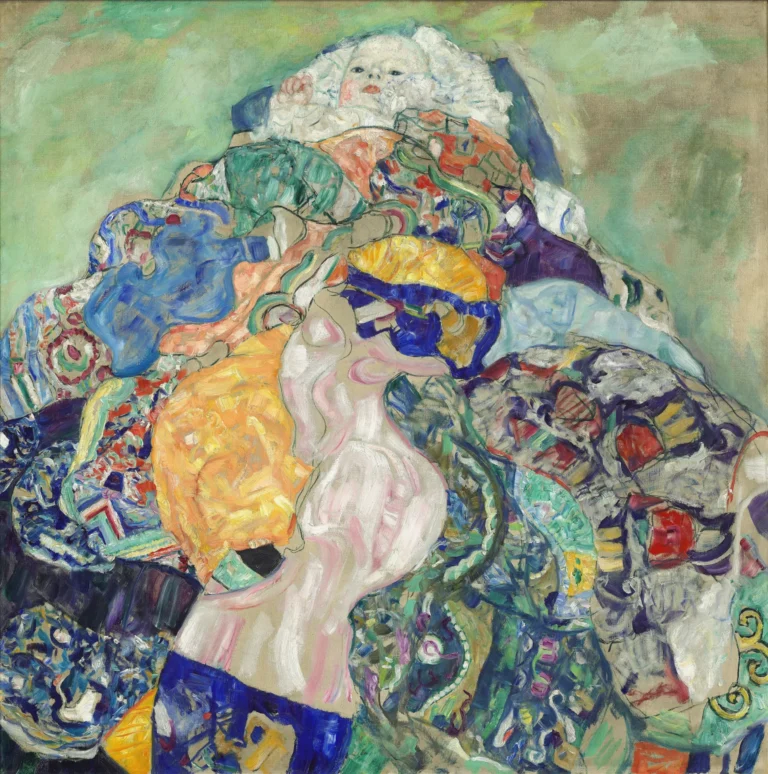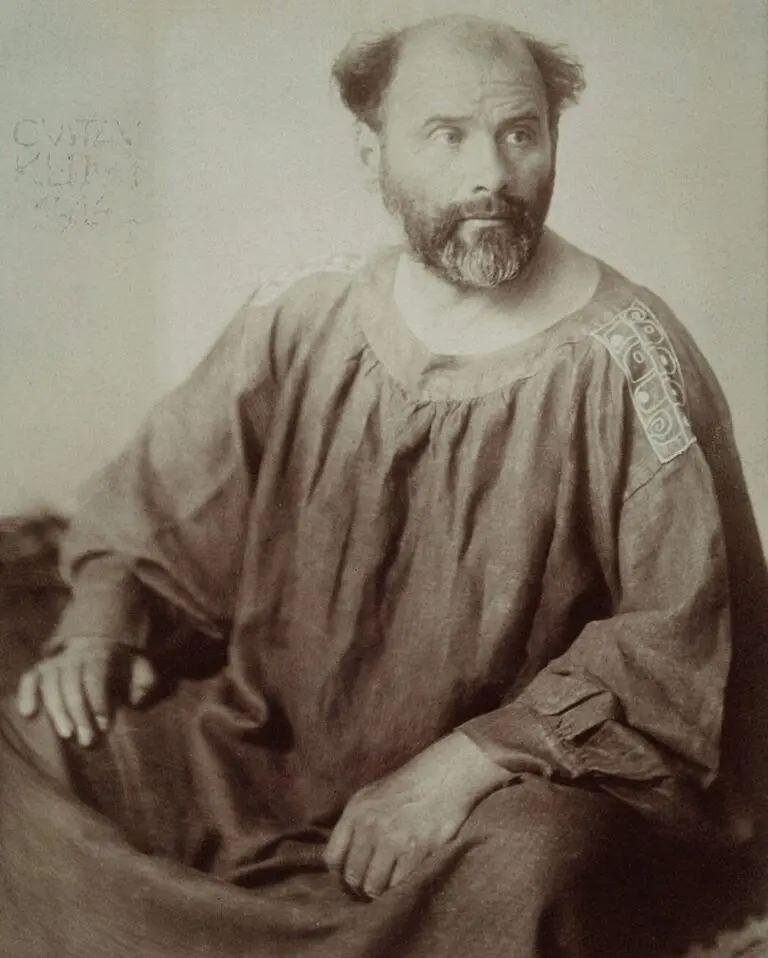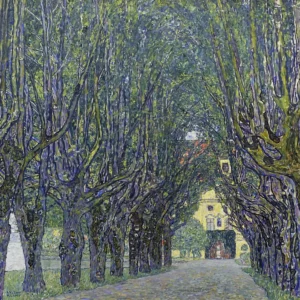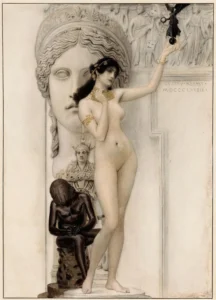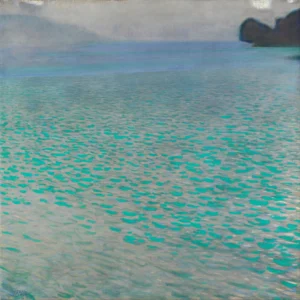Baby (Cradle) (1917-1918)
Painted between 1917 and 1918, 'Baby (Cradle)' captures a serene depiction of a baby lying on a decorative cradle, distinct from Klimt's earlier subjects. The triangular composition and rich patterns of flowers, spirals, and contrasting colors reflect Klimt's late style evolution. At 110.9 x 110.4 cm, this oil on canvas remains an exploration of childhood, nature, and form. Its intricate detailing has made it a celebrated piece in Klimt's oeuvre.
1917 - 1918
About the Artwork
'Baby (Cradle)' emerges from a transitional period in Klimt's career, representing a break from his usual portrayals of women and figures. This work not only signifies his shift towards a more abstract and geometric approach but also stands as a reflection of the tumultuous times during World War I. Klimt's exploration of colors and patterns here suggests a deeper connection to the innocence of childhood, juxtaposed against the chaos of the world outside. Originally sold to a Viennese couple in 1919, the painting traveled through several owners, ultimately finding a permanent home in the National Gallery of Art, where it resonates with visitors, capturing both a moment in time and the essence of life.
Did You Know
‘Baby (Cradle)’ marked a significant shift in Klimt’s artistic focus from his iconic depictions of women to vulnerability and innocence, showcasing the depth and emotional connection he could evoke through a simple subject like a recumbent child.
The composition is notable for its geometric arrangements, with the baby’s head forming the apex of a triangle, demonstrating Klimt’s innovative approach to blending figures within abstract space, a hallmark of his later works.
As part of Klimt’s later oeuvre, ‘Baby (Cradle)’ reflects the culture of Austria during post-World War I, embodying themes of hope and rebirth, aspects that were deeply resonant in a time of recovery and reconstruction.





